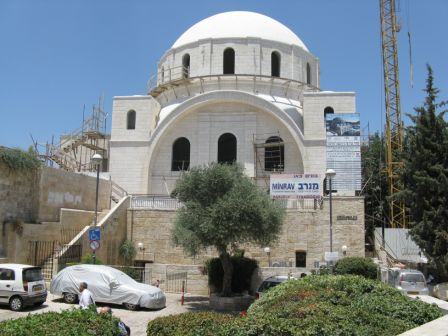Historic Synagogue Depicts Biblical Sites
 The Hurva Synagogue reopened Monday to the public after an extensive four-year construction project in the Old City of Jerusalem. Built in 1864 atop ruins of an earlier synagogue, the Hurva Synagogue was the largest and considered the most important synagogue in Jerusalem.
The Hurva Synagogue reopened Monday to the public after an extensive four-year construction project in the Old City of Jerusalem. Built in 1864 atop ruins of an earlier synagogue, the Hurva Synagogue was the largest and considered the most important synagogue in Jerusalem.
It was destroyed in 1948 during Israel’s War of Independence. After the city was reunified in 1967, a 52-foot arch was erected on the site to commemorate the giant dome of the destroyed building, and this arch has been incorporated into the dome that is the centerpiece of the new building.

The new Hurva Synagogue features wall paintings based on the building’s original murals, including depictions of the Tower of David, Rachel’s Tomb, the Sea of Galilee and the Cave of the Patriarchs.
“Th e opening of the Hurva Synagogue is a highly anticipated and historic event in Jerusalem,” says Arie Sommer, Commissioner for Tourism, North and South America, “And the re-imagined wall paintings will bring new life to one of Israel’s most important synagogues.”
e opening of the Hurva Synagogue is a highly anticipated and historic event in Jerusalem,” says Arie Sommer, Commissioner for Tourism, North and South America, “And the re-imagined wall paintings will bring new life to one of Israel’s most important synagogues.”














































